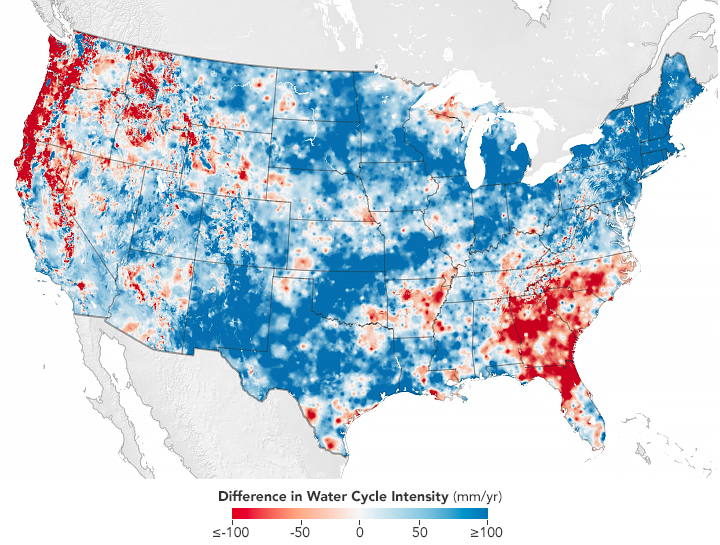Forcing people to work in deadly heat is mostly legal in the U.S. – As the planet records some of its highest average temperatures, workers have barely any legal protections from extreme heat – “They send us with two bottles of water, and that’s it”

By Jacob Bogage and Eli Tan
14 July 2023
(The Washington Post) – The pain usually starts for Karla Perez when the temperature reaches 100 degrees.
“When it’s too hot, I feel like vomiting,” said Perez, who has worked landscaping and construction jobs in the Dallas area for the last decade. “My legs are shaking. And it feels like I can’t see well, I see dark.”
Now Perez is worried about losing water breaks in 115-degree heat, a result of a new state law stripping worker protections in Dallas and Austin that had codified baseline heat safety regulations.
Recent weeks have seen Earth’s highest average temperatures on record, according to climate studies, yet most U.S. workers have few legal protections related to extreme heat conditions. The federal government is in the midst of a years-long process to draft heat safety rules, and only six states have their own regulations that guarantee laborers access to water, rest and shade — the three elements that medical professionals say can protect workers from heat illness.

The result, experts say, is that workers in a bevy of industries — from farmworkers to roofers and delivery drivers to sanitation professionals — are left to defend themselves under the scorching sun.
The consequences can be deadly.
Between 2017 and 2022, the deaths of 121 workers on the job were officially attributed directly to heat, according to the Occupational Safety and Health Administration, which says that number is almost surely an undercount because heat-related deaths are often blamed on other workplace accidents or underlying health conditions. For example, an individual who mishandles dangerous machinery in heated conditions may have been severely dehydrated to the point of incapacitation, or a roofer who falls to their death may have lost consciousness due to heat.
Heat illness can lead workers to make unsafe decisions, said Elizabeth Strater, director of strategic campaigns for the United Farm Workers.
“You are already reacting more slowly, and you are making different choices than you would,” she said. “A lot of people become irritable at this point, they’re not going to be taking the advice of the people around them. You’re not recognizing these are [working] conditions that are unusual and dangerous.”
That danger is only going to get worse, both over this summer and in years to come. July 4 was Earth’s hottest day on record as a heat dome smothered parts of Texas and conditions from El Niño, the infamous climate pattern that provokes stifling heat and harsh rains, began to strafe the West Coast.
“We are seeing our extreme summer weather, which we always have, superimposed on a long-term trend that is not only greater than, but happening faster than, any time in human history,” said Katharine Hayhoe, chief scientist at the Nature Conservancy, a leading global environmental advocacy group. “The average temperature of the planet is warmer than any time in the history of human civilization.”

Heat policy
In Texas, lawmakers nullified heat safety ordinances in Dallas and Austin as part of a sweeping statute that stripped local governments’ rights to regulate workplace issues. The Republican-controlled Texas legislature found those and other local workplace ordinances too burdensome on employers that do business across the state and especially on the booming construction industry.
“What was happening was we had some rogue cities that maybe stepped too far over their skis and ventured into some areas that they shouldn’t have ventured into,” said Geoffrey Tahuahua, president of the Associated Builders and Contractors of Texas.
The water break ordinances “were not a direct target of this bill,” he said, though other construction industry officials found them superfluous. Industry standards, Tahuahua said, provide more heat safety breaks than Dallas and Austin required.
“The rules that were adopted by Dallas and Austin are not anything that any of our members would try to enforce because it doesn’t seem sufficient,” said Scott Norman, CEO of the Texas Association of Builders. “It doesn’t seem enough in the heat of Texas. You could argue they’d violate the OSHA standards.”
Extreme heat risk falls under the OSHA’s “general duty” clause, a catchall for job-site hazards without specific guidelines.
That makes it difficult for regulators to hold employers accountable for heat injuries, said Jordan Barab, who served as OSHA’s deputy assistant secretary from 2009 to 2017. Regulators must meet a higher burden of proof to establish heat as the cause of an injury or death.
Those legal and procedural hurdles mean OSHA often imposes penalties for heat hazards after a worker has died or been hurt on the job, he said, rather than proactively forcing employers to provide adequate water, shade and rest. […]

“They send us with two bottles of water, and that’s it,” said Motte, 60, whose work for a Houston-based staffing agency often has him toiling outdoors. “Sometimes the sites have cold water, sometimes they don’t.”
The most dangerous workplaces during heat waves are outdoor sites. According to OSHA data, the three most fatal heat-related jobs are construction, agricultural work and landscaping, and among these jobs, OSHA says 50 to 70 percent of heat fatalities occur within a worker’s first few days.
On 1 January 2023, a farmworker died of heat stroke in Parkland, Fla., on his first day on the job harvesting vegetables, according to an OSHA investigation.
In Inman, Neb., in July 2019, a worker collapsed and died in the extreme heat after digging holes next to telephone poles for 11 hours on his first shift, the agency found.
And on a blistering June 2017 day in Catarina, Tex., a new worker complained of cramps and nausea while working inside a well, but was told to work through the shift, after which he convulsed for 90 minutes before dying of heat stroke, according to an OSHA incident report. [more]
Forcing people to work in deadly heat is mostly legal in the U.S.


